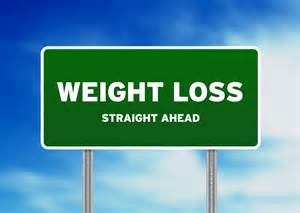Choosing Your Next Fitness Goals
When I decided to get fit and lose weight, there were a number of big decisions I had to make. The main one was what goal would I set for myself that would put me on the path to success?
Why We Fail with Our Fitness Goals
A lot of people set a fitness goal and try to keep up the good work. After a couple of days or weeks of effort, however, they have usually given up. In some cases, they might be in even worse shape than before due to an injury caused by overdoing things, or not doing an exercise properly.
We often fail to reach our goals because they are too vague, and/or because we think we have to be “perfect.”
Setting a SMART Goal
Goals often run along the lines of statements like this:
“I want to get more fit.”
“I want to lose weight.”
The trouble is these are not SMART goals.
SMART=
· Specific
· Measurable
· Attainable
· Relevant/Realistic
· Timed
In terms of specific, what does more fit mean? How much weight do you want to lose? Some people decide to spend 30 minutes working out every day. Others set a weight loss goal of, for example, 20 pounds.
The goal should be measurable so you can track your progress. Set a timer for 30 minutes. Or, check your scale each week to see how much weight you are losing.
Most goals are attainable, but it is a question of whether or not they are realistic within a given time frame, the “T” in SMART goals. With the gym goal, it would be foolish to start with 30 minutes every day if you have been a couch potato for years. However, this could be your goal within 2 to 3 months.
If you want to lose 20 pounds overnight, that is not realistic. It took time to gain weight, so it will take time to lose it. A safe rate of weight loss averages at 1 to 2 pounds per week, so if you said you wanted to drop 20 pounds within 3 months, that would be possible. A weight loss diary could help you track your results.
Giving Up the Idea of Perfection
A lot of people wonder what the best fitness program is. The honest answer is: “The one you will stick to.” You don’t have to be perfect, but you do have to do your best. But your fitness program is in your hands. If you want to work out every day, fine. If you want to skip a day, that’s all right too. The main thing is to be consistent and track each session in your fitness journal to make sure it is advancing you towards the goal you have set.
Getting Organized
Once you set your goal, it is important to track it. A notebook and a plan can help. When are you going to set aside time for working out or going to the gym? What days will you do cardio (to raise the heart rate) and what days will you do strength training in order to build long, lean muscle?
Plan ahead and see what a difference it can make to achieving your fitness goals.
Why We Fail with Our Fitness Goals
A lot of people set a fitness goal and try to keep up the good work. After a couple of days or weeks of effort, however, they have usually given up. In some cases, they might be in even worse shape than before due to an injury caused by overdoing things, or not doing an exercise properly.
We often fail to reach our goals because they are too vague, and/or because we think we have to be “perfect.”
Setting a SMART Goal
Goals often run along the lines of statements like this:
“I want to get more fit.”
“I want to lose weight.”
The trouble is these are not SMART goals.
SMART=
· Specific
· Measurable
· Attainable
· Relevant/Realistic
· Timed
In terms of specific, what does more fit mean? How much weight do you want to lose? Some people decide to spend 30 minutes working out every day. Others set a weight loss goal of, for example, 20 pounds.
The goal should be measurable so you can track your progress. Set a timer for 30 minutes. Or, check your scale each week to see how much weight you are losing.
Most goals are attainable, but it is a question of whether or not they are realistic within a given time frame, the “T” in SMART goals. With the gym goal, it would be foolish to start with 30 minutes every day if you have been a couch potato for years. However, this could be your goal within 2 to 3 months.
If you want to lose 20 pounds overnight, that is not realistic. It took time to gain weight, so it will take time to lose it. A safe rate of weight loss averages at 1 to 2 pounds per week, so if you said you wanted to drop 20 pounds within 3 months, that would be possible. A weight loss diary could help you track your results.
Giving Up the Idea of Perfection
A lot of people wonder what the best fitness program is. The honest answer is: “The one you will stick to.” You don’t have to be perfect, but you do have to do your best. But your fitness program is in your hands. If you want to work out every day, fine. If you want to skip a day, that’s all right too. The main thing is to be consistent and track each session in your fitness journal to make sure it is advancing you towards the goal you have set.
Getting Organized
Once you set your goal, it is important to track it. A notebook and a plan can help. When are you going to set aside time for working out or going to the gym? What days will you do cardio (to raise the heart rate) and what days will you do strength training in order to build long, lean muscle?
Plan ahead and see what a difference it can make to achieving your fitness goals.



Comments
Post a Comment